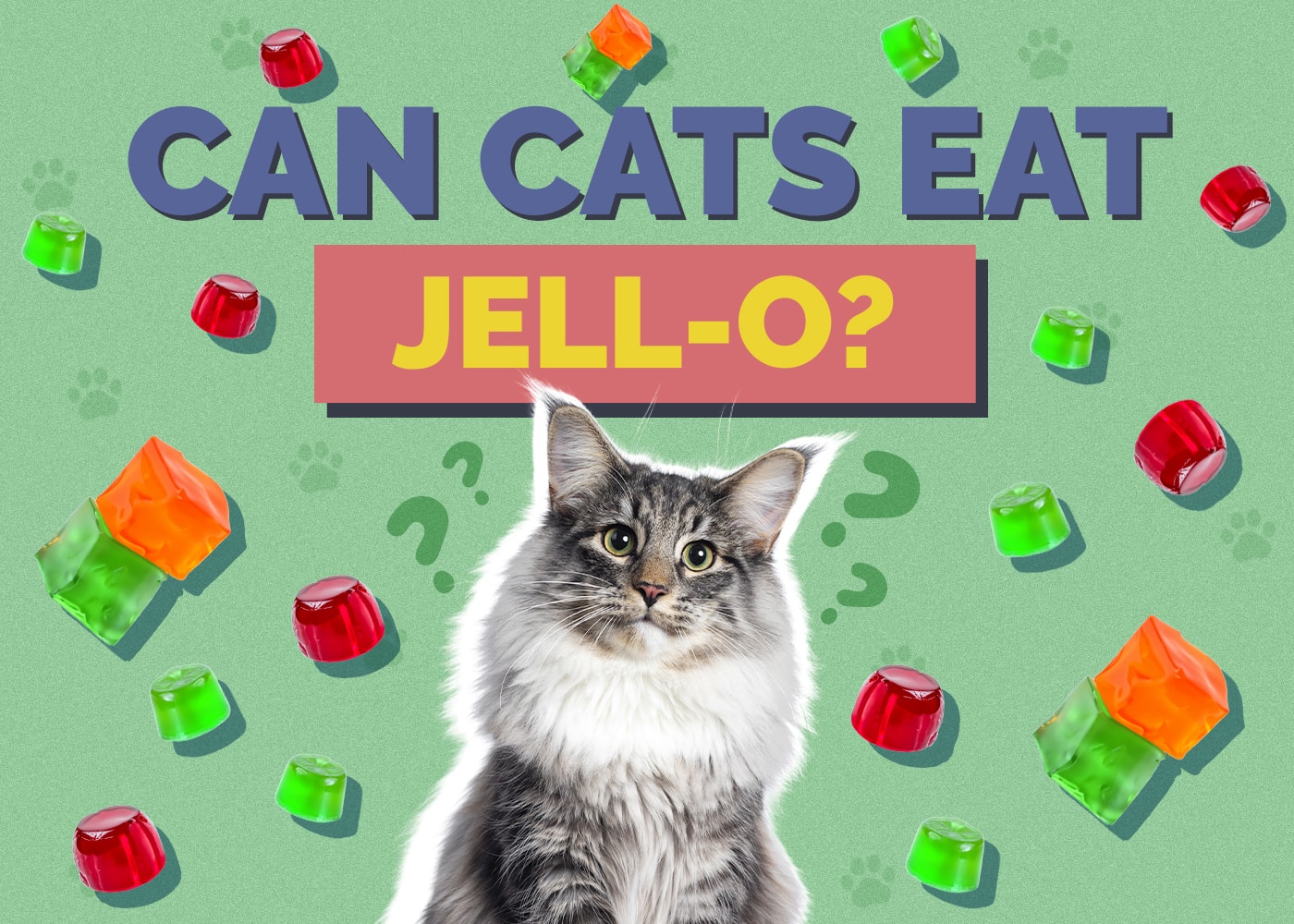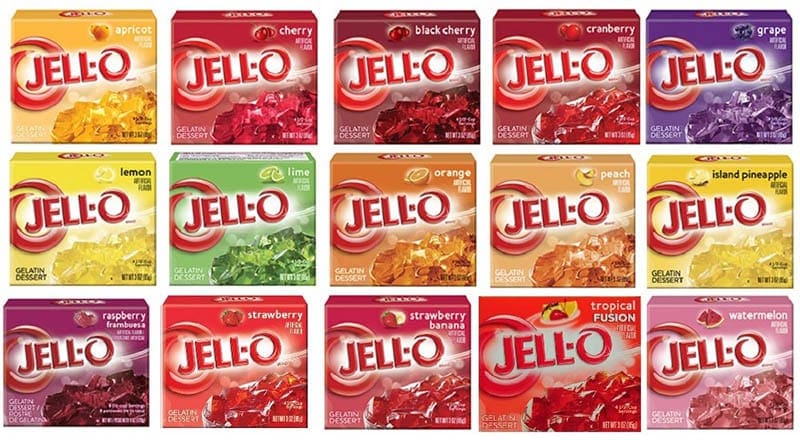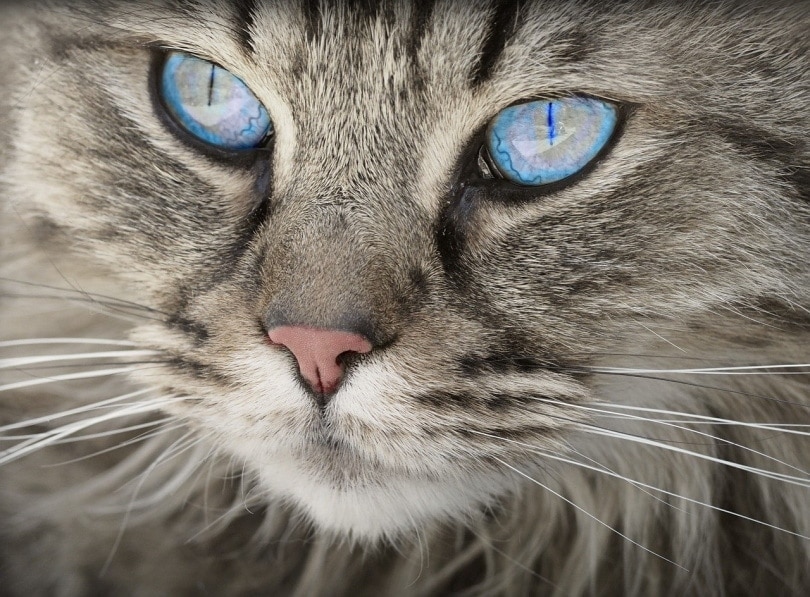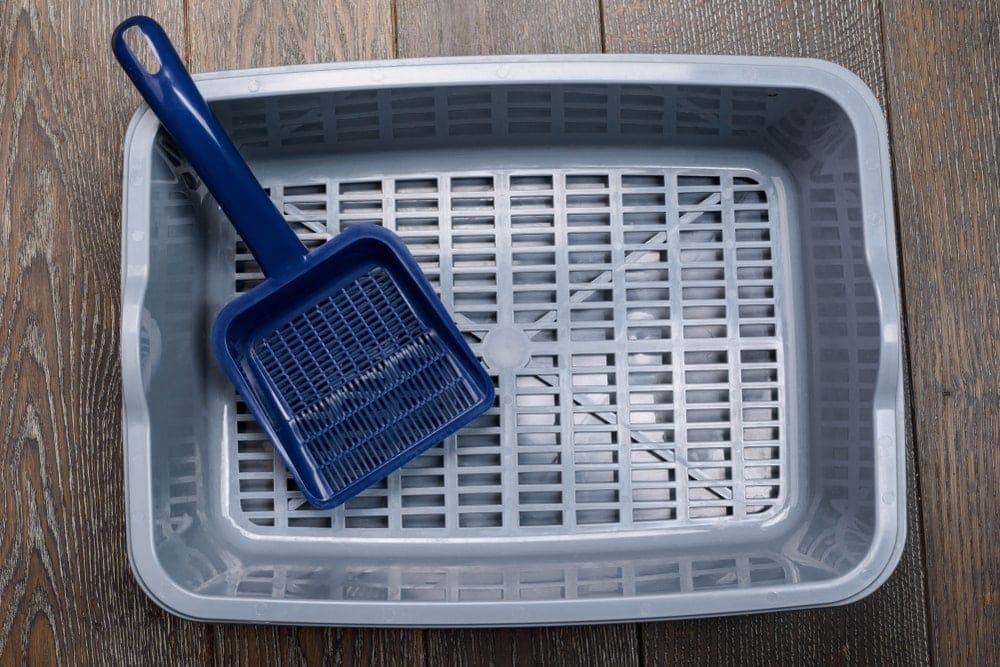Can Cats Eat Jell-O? Nutritional Facts & Safety Guide
By Ashley Bates
Updated on

Cats can eat some pretty oddball things, from inedible items to potentially dangerous foods. It’s best to keep an eye out when they take an interest in something with possible consequences. Most of the time, your kitty will only beg and plead for savory items like meat.
However, on rare occasions, they might want something a little out of character—like the wiggly Jell-O on the kitchen counter. The good news is that Jell-O won’t kill your cat, but it isn’t healthy for them, either. Cats don’t benefit from added sugar in their diet. Find out why below!
What Is Jell-O Exactly?
We all have eaten the bouncy dessert and likely made it with joy as a child. It’s an easy, fun thing to create and pairs well with many sweet dishes. But you might not have stopped to consider exactly what the powdery substance is composed of.
Jell-O Nutrition Facts (Strawberry)
Serving size: 1/8 package
| Calories: | 80 |
| Total Fat: | 0 g |
| Sodium: | 95 mg |
| Total Carbohydrates: | 19 g |
| Protein: | 2 g |
Essentially, Jell-O is a combination of gelatin and sugar. It doesn’t contain any vitamins or minerals that add nutritional value.
A Deeper Look at the Ingredients
While Jell-O contains very few ingredients, none are suitable for cats. Truthfully, it isn’t the smartest dietary choice for humans, either. It’s loaded with empty calories and sugars that might pass through without issue on occasion, but Jell-O isn’t a daily essential for your feline—far from it.
Gelatin
Gelatin isn’t necessarily a bad ingredient for cats. It’s translucent and flavorless, derived from animal collagen. Gelatin turns rubbery when it is wet, giving Jell-O that “wiggly” effect.
Artificial Dyes
All Jell-O contains artificial dyes to achieve the different colors offered. For instance, in strawberry-flavored Jell-O, the makers add Red Dye 40. While it isn’t necessarily detrimental to a cat in small amounts, it is best to avoid it.
Sugar
Jell-O contains a considerable amount of sugar, no matter the brand or flavor. Since gelatin is flavorless, the added sugar gives it those fruity tastes we love so much, but it’s packed with calories that your cat doesn’t need.

Cats Have No Sweet Taste Receptors
Since cats are obligate carnivores, meaning they only require meat for survival and health, they didn’t develop the ability to taste sugar. Sugar is a foreign substance that they absolutely do not need in their diet.
It’s likely rare that you will see a cat beg for anything that doesn’t contain meat in some way. Instead, cats crave savory flavors, which is why when you pop open a can of tuna, they come running—demanding a taste. Evolutionary-wise, the sweetness was permanently axed out of the equation long ago.
While Jell-O has a wiggly lure that might make your mouth water, craving that sugary goodness, it does not taste the same to your cat. In fact, if they eat Jell-O at all, it’s more of a texture than a taste that they desire.

Do Cats Like Jell-O?
Some cats might rarely take an interest in Jell-O, but it isn’t a common occurrence. Since nothing in Jell-O will really trigger your feline’s senses, they should usually pass right by without having their curiosity piqued.
But, of course, we’ve all met those overly curious cats that eat unusual things. If that’s the case, your cat might try to snatch a lick or two. While you should never serve up a platter of Jell-O, a lick or a small piece won’t hurt.
Safety of Jell-O for Cats
If your cat has a bit of Jell-O on its own accord, it won’t kill them. However, it can really depend on any additional ingredients. Jell-O is often used in combination with different desserts, making it potentially toxic or upsetting for your cat’s system. Also, some sugar-free Jell-O has additional sweeteners or ingredients that are not good for your cat.
Look out for other things like certain nuts, which might pose additional concerns. Nuts like pecans, walnuts, and almonds aren’t necessarily deadly, but they can cause severe gastrointestinal upset and even pancreatitis in some cases. Also, certain fruits like grapes are toxic, too. Here’s a comprehensive list by the ASPCA, just in case you have any other questionable ingredients to mention.
Now that you know what you can safely feed your cat, it’s just as important to find a bowl that supports their health and well-being. With whisker-friendly bowls and a wide tray to catch any spills, our Hepper NomNom Cat Bowl is our favorite option.
Conclusion
So, now you know that your cat really shouldn’t have Jell-O, but if they do—it will be fine. Permitting, of course, they didn’t eat anything else that could be toxic. If your cat seems to be having a bad reaction, a trip to the vet can determine the underlying cause.
If you have additional questions about foods for cats, you should reach out to a professional for clarification. It’s better to be on the safe side when it comes to potentially irritating things your cat may consume.
See also:
- Can Cats Eat Frosting? Vet Reviewed Facts & Safety Guide
- Can Cats Eat Eggplant? Vet-Reviewed Nutritional Facts & FAQ
Featured Image Credit: Girl with red hat, Unsplash















